Raytheon IDS M3-VHF-136 110W VHF BASE STATION User Manual REPEATER CALIBRATION
JPS COMMUNICATIONS, INC. 110W VHF BASE STATION REPEATER CALIBRATION
Contents
REPEATER CALIBRATION USER MANUAL
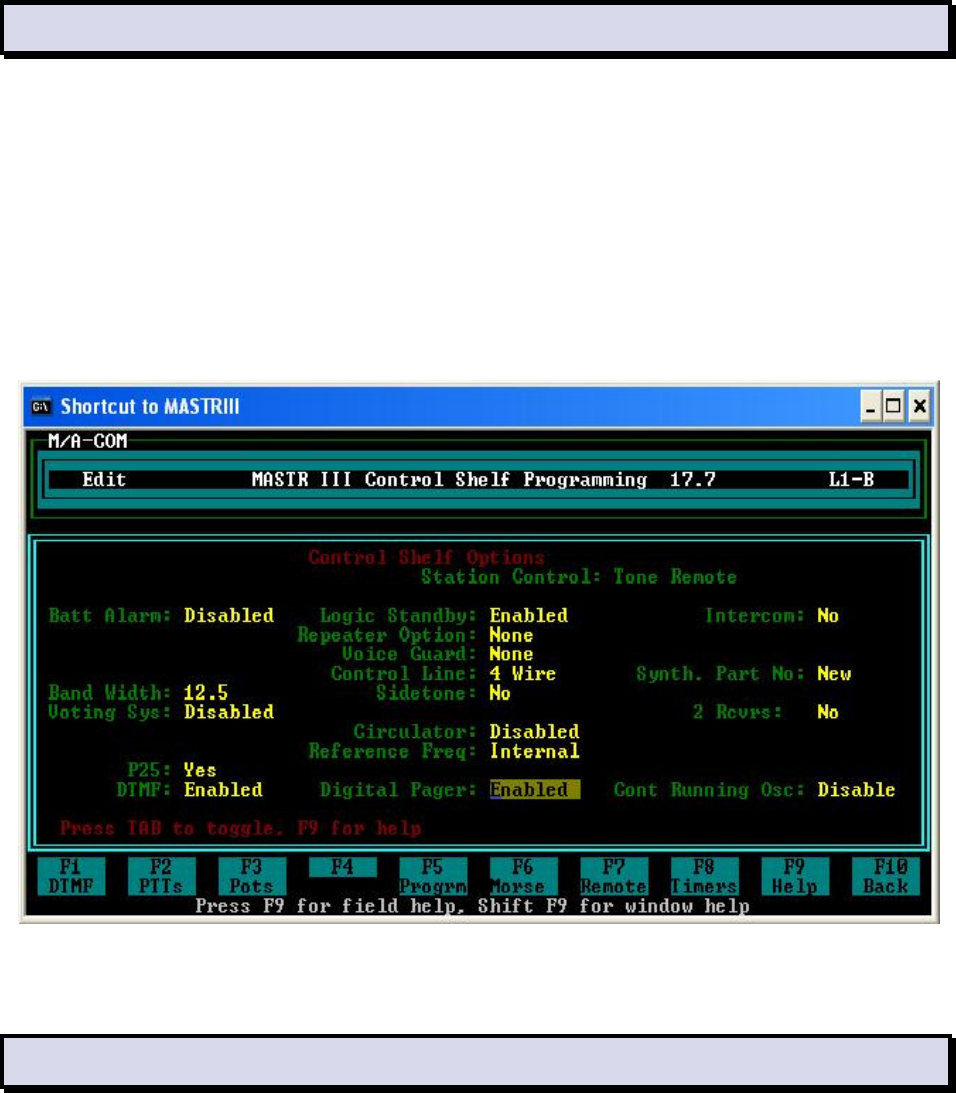
MASTR III Repeater Calibration Procedure 5/16/2011
Raytheon JPS Communications, Inc. 2-1
8/22/2011
1 Repeater Configuration
1.1 Radio Programming
The radio should be programmed using the Harris MASTR III Control Shelf Programming
application M3.BAT (MS-DOS batch file) using a standard RS232 serial cable connected to the
MASTR III Data Port (Left Receiver or Right Receiver) and the host PC. The Bandwidth
should be set for 12.5kHz Narrowband operation. Default factory settings are used for all other
parameters except as required by the user.
1.1.1 Options Menu F7
The Bandwidth should be set for 12.5kHz Narrowband operation. Enable “Digital Pager” and
“P25”. Default factory settings are used for all other parameters except as required by the user.
Figure 1-1 Bandwidth Setting
2 Radio Calibration using PCCT
Radio calibration requires a Radio Service Test Set with APCO 25 capability. The following
example uses an Aeroflex 3920.
2.1.1 Equipment Set Up
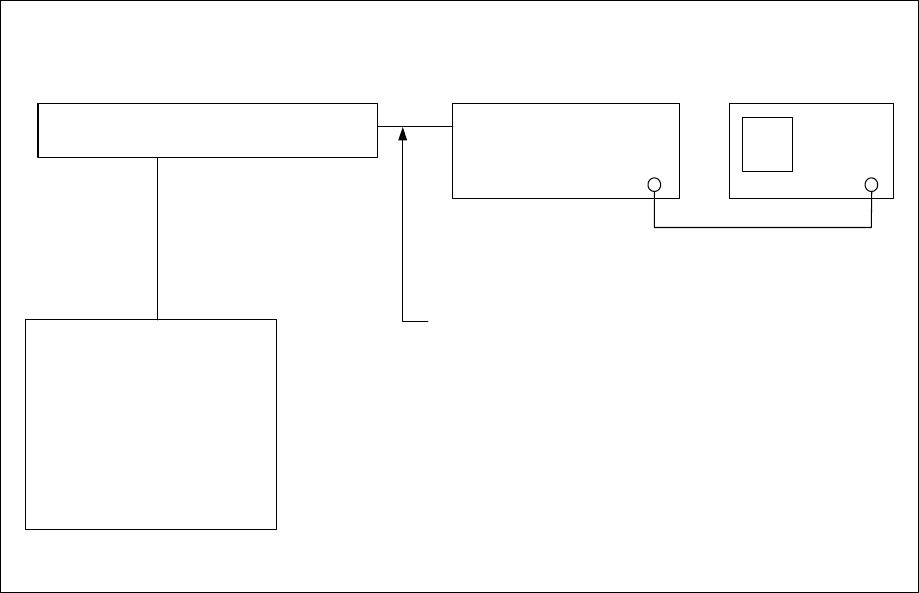
MASTR III Repeater Calibration Procedure 5/16/2011
Raytheon JPS Communications, Inc. 2-2
8/22/2011
Connect the equipment as shown below:
Figure 2-1 Equipment Setup
Aeroflex 3920
T/R
Radio Under
Calibration
Tx
P25CC
PC
PCCT Calibration
Software
CAT 5 50 ohm coax
P25CC Radio Interface Cable
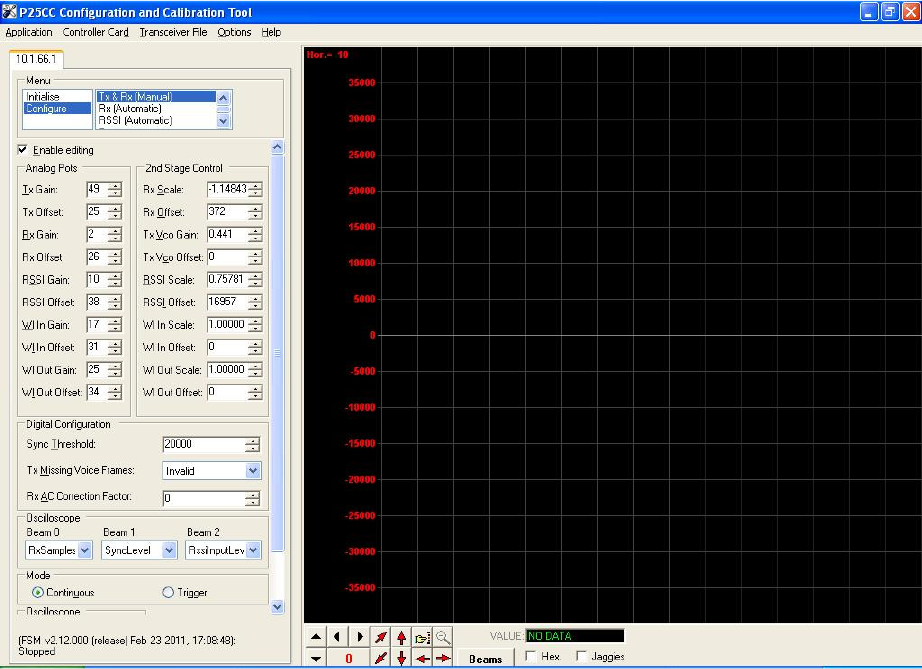
MASTR III Repeater Calibration Procedure 5/16/2011
Raytheon JPS Communications, Inc. 2-3
8/22/2011
2.1.2 Initial Steps
2.1.2.1 Set the Radio Test Set to analog duplex mode and program to monitor the
frequency of the transmitter.
2.1.2.2 Power up the radio and P25net CC.
2.1.2.3 Launch PCCT and connect to the P25net CC channel.
2.1.3 Radio Tx Calibration
2.1.3.1 In PCCT go to the Configure >Tx window and select Analog Sine Wave
per Figure 2-2. Preset the Tx Gain and Offset Pots to the values shown.
Figure 2-2 Configure Tx Window
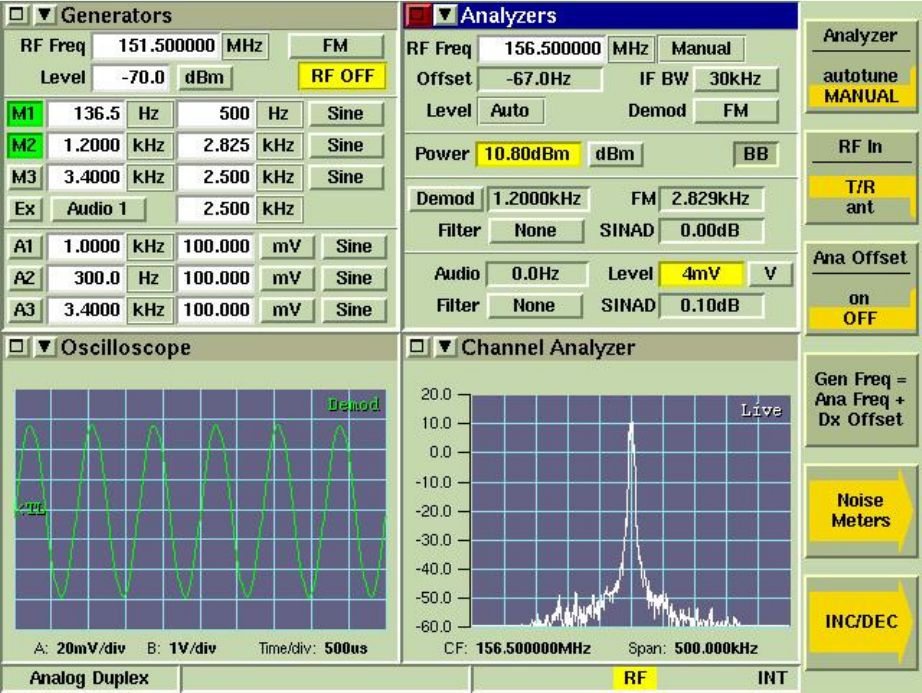
MASTR III Repeater Calibration Procedure 5/16/2011
Raytheon JPS Communications, Inc. 2-4
8/22/2011
2.1.3.2 Start a Sine Wave test tone in PCCT and adjust the Tx Gain for
approximately 2.8kHz as read on the test set deviation meter (Figure 2-3).
Adjust the Tx Offset to as necessary to get the correct transmit frequency
(minimum offset). The Tx Gain and Offset Pots are interactive so this will
require some iteration to get the proper settings. Once you have made
coarse adjustments, use the TxVcoGain and TxVcoOffset Pots for finer
steps. The TxVcoOffset Pot has 100 step increments; you can interpolate
and enter a number in the box to get a finer step if necessary.
Figure 2-3 Test Set Oscilloscope: Demodulated Audio
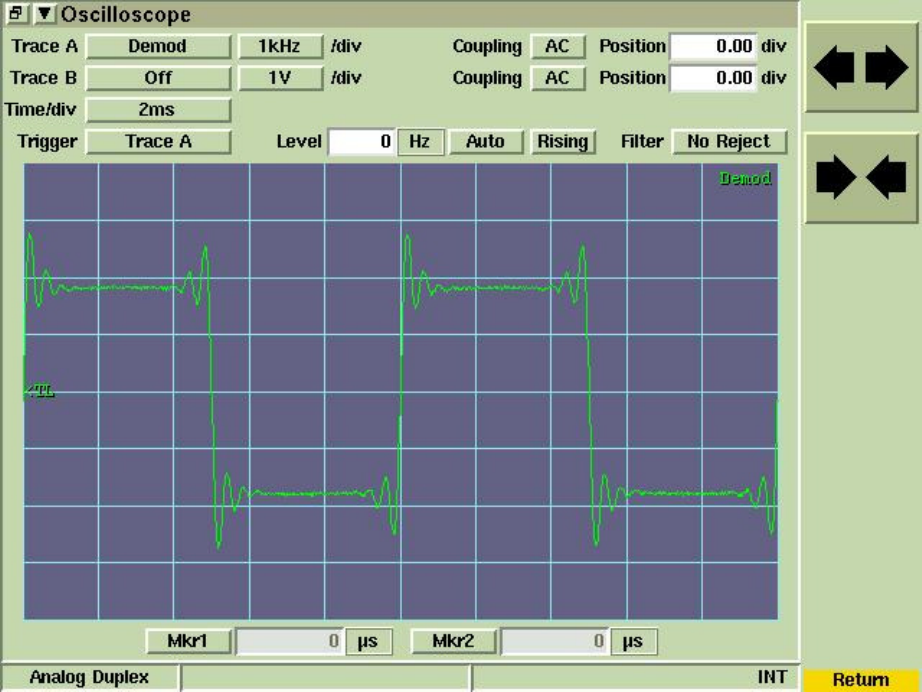
MASTR III Repeater Calibration Procedure 5/16/2011
Raytheon JPS Communications, Inc. 2-5
8/22/2011
2.1.3.3 Change the test tone selection on PCCT to Analog Short Square Wave
(100Hz) and verify the demodulated audio oscilloscope displays a good
approximation of a square wave with generally flat high and low levels
(Figure 2-4). A poor square wave indicates the radio needs to be aligned
with the factory service software to achieve better DC Balance.
Figure 2-4 Test Set Oscilloscope: Short Square Wave
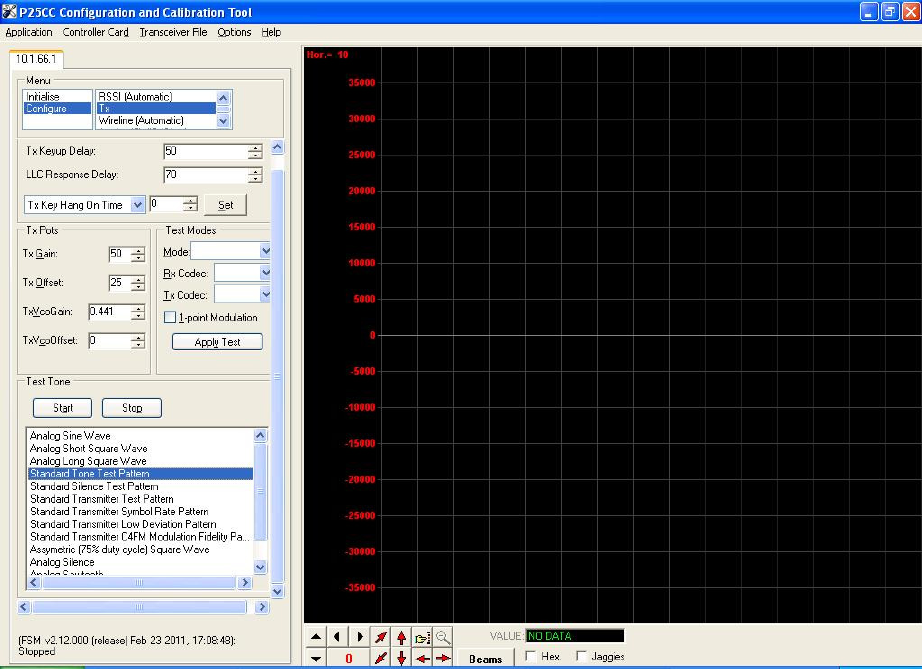
MASTR III Repeater Calibration Procedure 5/16/2011
Raytheon JPS Communications, Inc. 2-6
8/22/2011
2.1.3.4 Reconfigure the test set for P25 mode.
2.1.3.5 Start an IMBE test tone using PCCT set to Standard Tone Test Pattern.
Figure 2-5 Standard Tone Test Pattern
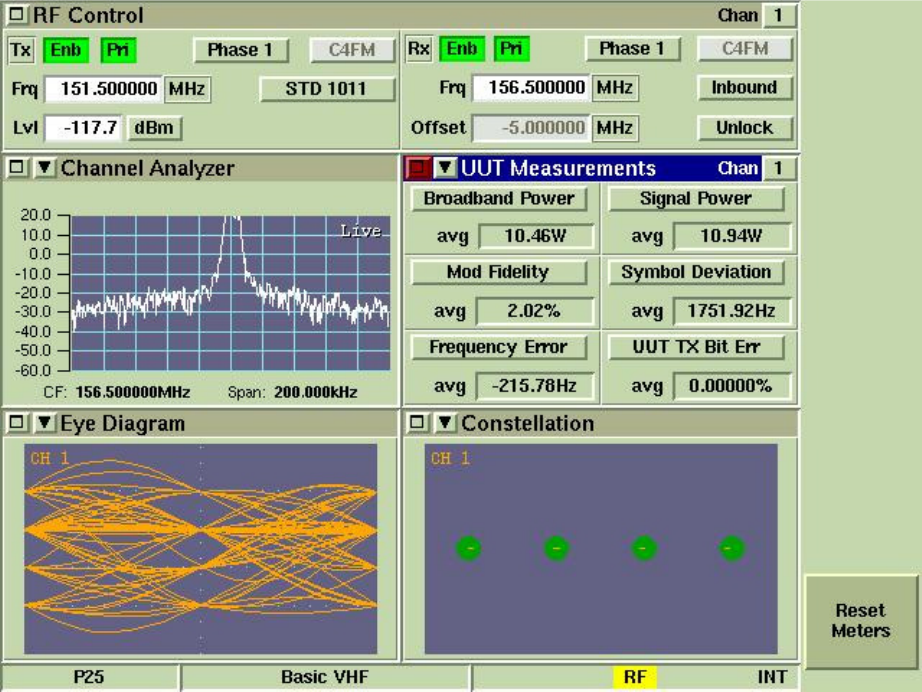
MASTR III Repeater Calibration Procedure 5/16/2011
Raytheon JPS Communications, Inc. 2-7
8/22/2011
2.1.3.6 Listen for a 1200Hz sine wave in the monitor speaker set for demodulated
audio. A P25 Handset may also be used for this step if tuned to the proper
frequency in conventional P25 mode.
2.1.3.7 Check the Symbol Deviation to verify that it is 1750Hz +/- 75Hz; adjust the
TxVcoGain to increase or decrease the deviation if necessary. Also, you
may adjust the Frequency Error by trimming the TxVcoOffset if needed.
The Constellation and Eye Diagrams are shown for reference. The
Modulation Fidelity should be better than 5% (typically<2%; SeeFigure
2-6) .
Figure 2-6 Transmitter Performance Screen
This completes Transmitter calibration. Unkey the transmitter and install a dummy load on the
Tx output in preparation for Receiver calibration
2.2 Rx Calibration
Receive calibration adjusts the P25net CC audio input level to match the radio line audio output
level and calibrates the P25net CC for the RSSI signal from the receiver.
• Rx Gain provides adjustment for the receiver line audio output entering the Channel
Card.
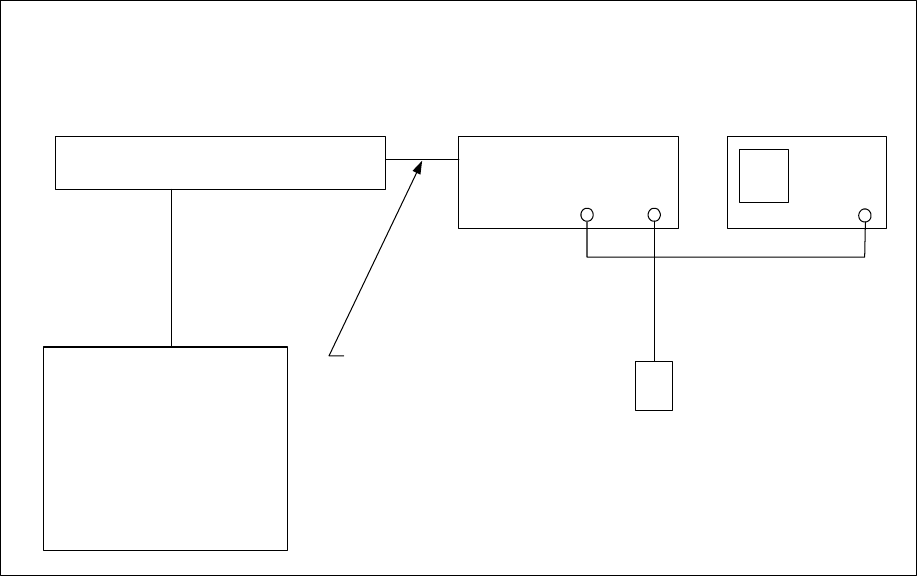
MASTR III Repeater Calibration Procedure 5/16/2011
Raytheon JPS Communications, Inc. 2-8
8/22/2011
• Rx Offset provides a DC reference level adjustment for the receiver audio. This
adjustment allows the output reference DC level from the receiver to be matched by the
P25netCC Rx input.
• RSSI Gain provides level adjustment for the RSSI input.
• RSSI Offset provides a DC reference level adjustment for the RSSI input signal.
2.2.1 Equipment Setup
Connect the equipment as shown in Figure 2-7.
Figure 2-7 Rx Calibration Set-up
Aeroflex 3920
T/R
Radio Under
Calibration
Tx
P25CC
PC
PCCT Calibration
Software
CAT 5 50 ohm coax
Rx
50 ohm dummy load
50 ohm coax
P25CC Radio Interface Cable
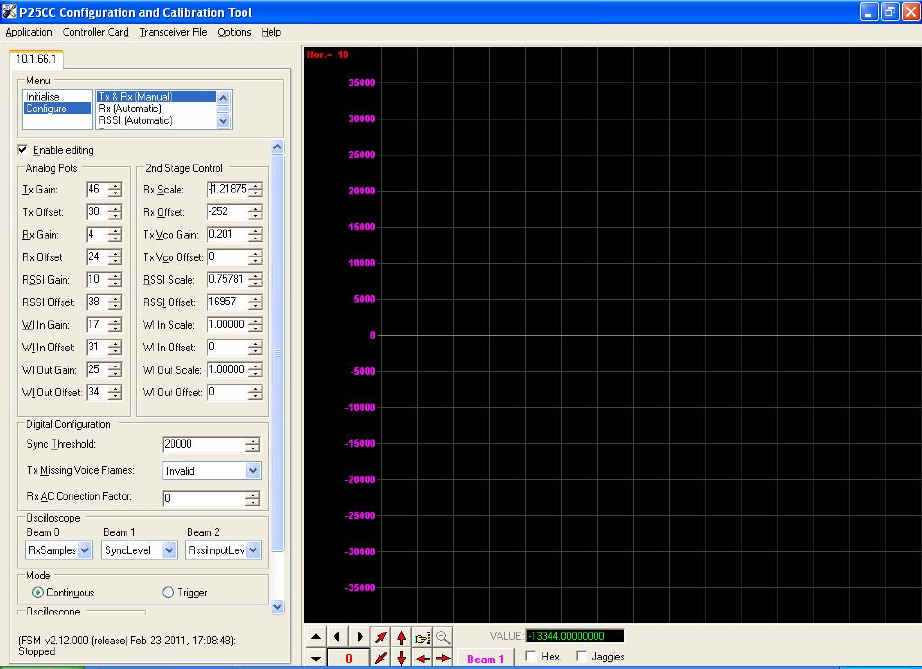
MASTR III Repeater Calibration Procedure 5/16/2011
Raytheon JPS Communications, Inc. 2-9
8/22/2011
2.2.2 Initial Steps
2.2.2.1 Launch PCCT and go to the Configure >Rx and Tx Manual window and
set default values for the Rx and RSSI parameters as shown in Figure 2-8.
Check the “Enable Editing” boxes for entering parameters.
Figure 2-8 Configure Tx and Rx (Manual) Window
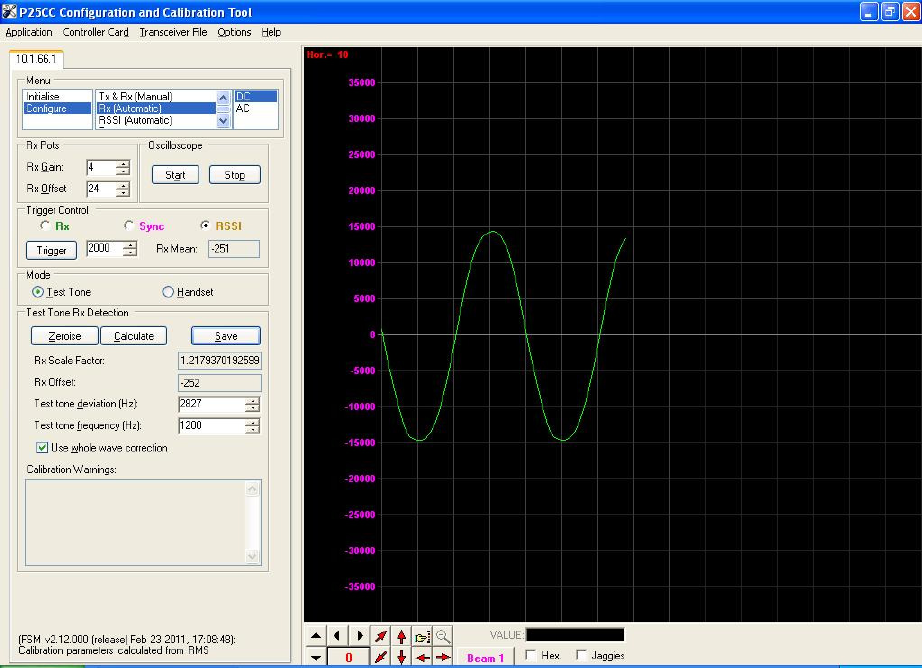
MASTR III Repeater Calibration Procedure 5/16/2011
Raytheon JPS Communications, Inc. 2-10
8/22/2011
2.2.3 Rx Calibration
2.2.3.1 Go to the Configure > Rx (Automatic) screen.
2.2.3.2 Set the generator to Analog Duplex Mode at the Receiver frequency; set
the modulation for a 1200Hz Sine with 2.83kHz deviation. With the
generator on and set to -70dBm, Check the Rx beam box and start the
oscilloscope on PCCT.
2.2.3.3 Adjust the Rx Offset so the mean of the observed sine wave is centered as
close as possible about zero. Adjust the Rx Gain so that the signal peaks
are slightly less than +17,000 and -17,000 but greater than +14,000 and -
14,000 (Figure 2-9).
Figure 2-9 Rx Gain and Offset Adjustment
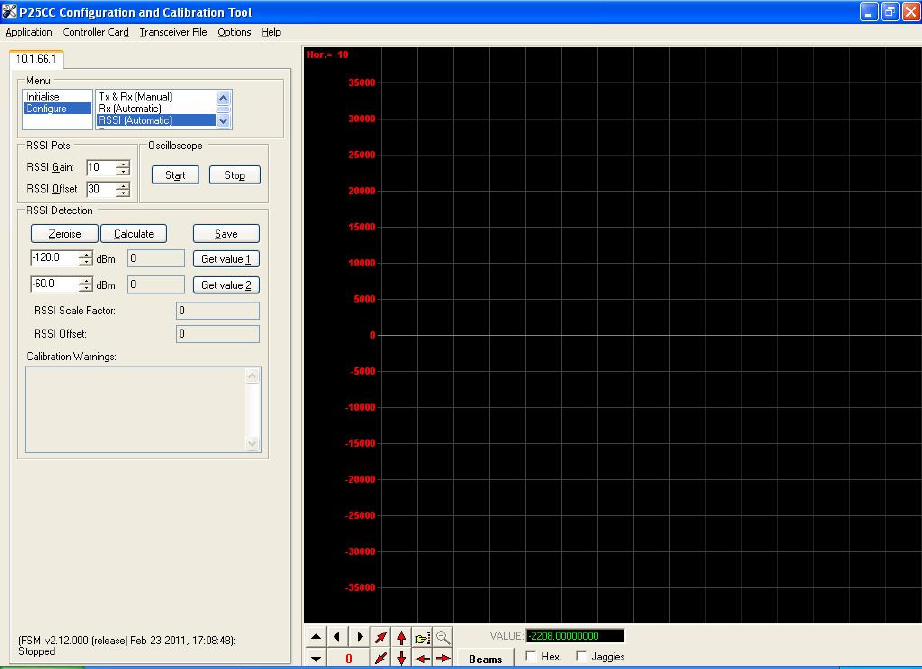
MASTR III Repeater Calibration Procedure 5/16/2011
Raytheon JPS Communications, Inc. 2-11
8/22/2011
2.2.3.4 Go to the Configure>Rx (Automatic) window and select trigger on RSSI
value of 2000.
2.2.3.5 Hit Trigger, Calculate, and Save to calculate and store the coefficients for
Rx Scale Factor and Offset
Note: If the Rx gain is too high or low a Calibration Warning will prompt
you to change the Rx gain and repeat the operation.
2.2.3.6 Return to the Configure >TX and RX (Manual) screen and place a (-) sign
in front of the Rx Scale Factor number. The MASTR III requires a 180
degree inversion for proper synchronization of P25 frames.
2.2.4 RSSI Calibration
2.2.4.1 Sect the Configure>RSSI (Automatic) screen.
Figure 2-10 RSSI (Automatic) Screen
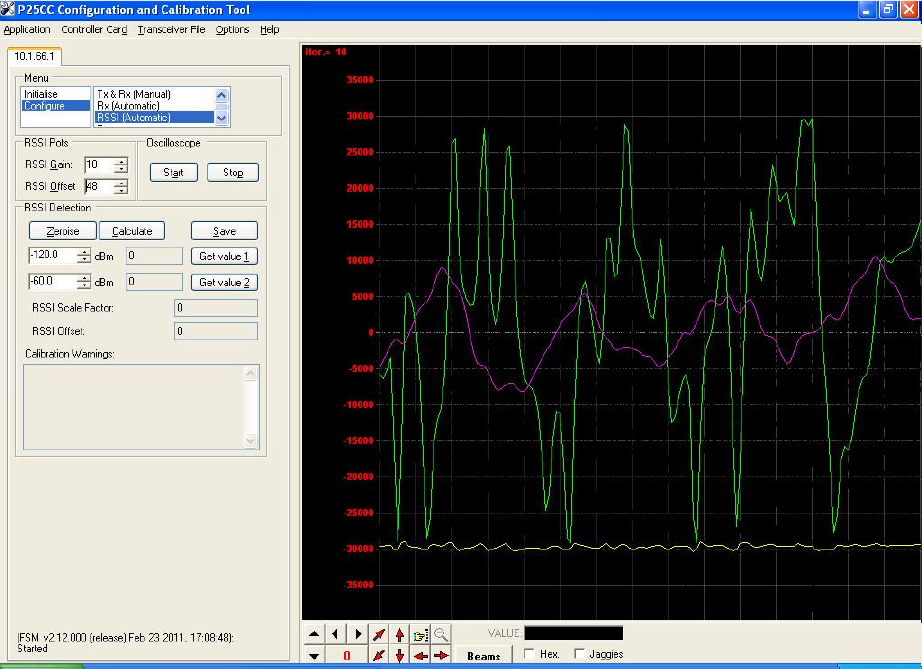
MASTR III Repeater Calibration Procedure 5/16/2011
Raytheon JPS Communications, Inc. 2-12
8/22/2011
2.2.4.2 Set the generator to -120dBm and turn on.
2.2.4.3 With the RSSI Gain set to 10, start the Oscilloscope and adjust the Offset
until the trace is around -30,000 (Figure 2-11).
Figure 2-11 RSSI Low Level
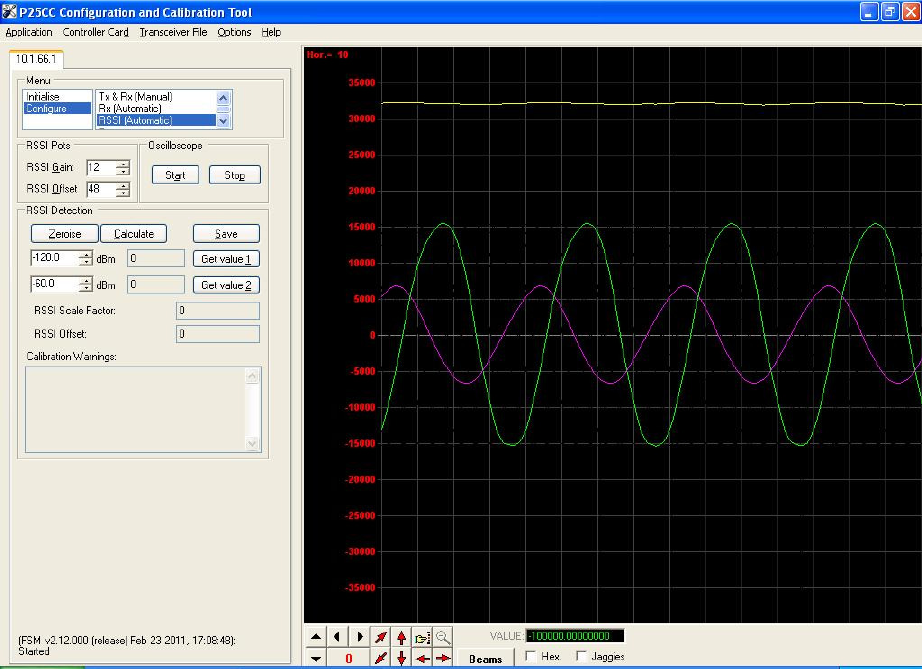
MASTR III Repeater Calibration Procedure 5/16/2011
Raytheon JPS Communications, Inc. 2-13
8/22/2011
2.2.4.4 Select the “Zeroise” button. Then select the “Get value 1” button next to
the -120dBm entry.
2.2.4.5 Change the generator level to -60dBm.Adjust the RSSI gain as required to
move the trace to above +30,000.
Figure 2-12 RSSI High Level
2.2.4.6 Set the generator back to -120dBm and verify the trace goes back to
around -30,000.Adjust RSSI Offset as required.
2.2.4.7 Reset the generator to -60dBm and select the “Get value 2” button next to
the -60dBm entry.
2.2.4.8 Select “Calculate”, then “Save”. A warning message will prompt you to
repeat the procedure if the limits are not satisfied. See Figure 2-13 RSSI
Calculate & Save Screen.
Note that RSSI values are displayed for the 2 generator levels and RSSI Scale Factor and Offset and were
calculated.
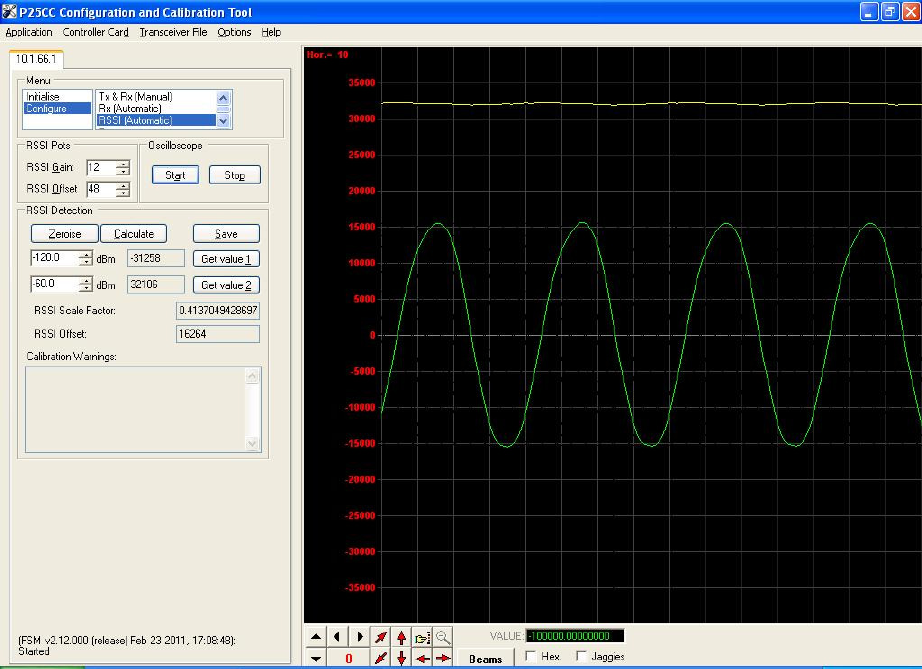
MASTR III Repeater Calibration Procedure 5/16/2011
Raytheon JPS Communications, Inc. 2-14
8/22/2011
Figure 2-13 RSSI Calculate & Save Screen
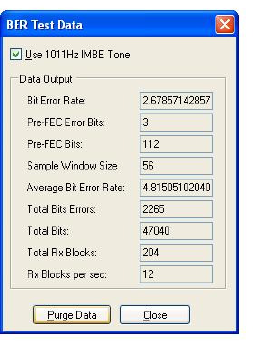
MASTR III Repeater Calibration Procedure 5/16/2011
Raytheon JPS Communications, Inc. 2-15
8/22/2011
2.2.5 Rx Verification
2.2.5.1 Turn off test set generator.
2.2.5.2 Reconfigure the test set to generate a STD 1011 test pattern at -70dBm
level.
2.2.5.3 Verify the Rx LED on the P25netCC channel is lit.
2.2.5.4 Turn off the generator.
2.3 Bit Error Rate Test
2.3.1.1 On PCCT toolbar select Controller Card\Bit Error rate test.
2.3.1.2 Start the generator with a STD 1011 test pattern at -114dBm.( Be certain to
include the insertion loss of the RF cable at the test frequency).
2.3.1.3 Press the Purge Data button and allow the Total Rx Blocks to reach 200
for each generator setting as you decrease the level in 0.5dB increments.
2.3.1.4 The Average Bit Error Rate should be 5% or less for -116dBm (typically -
118dBm .
Figure 2-14 BER Test data
This completes Radio calibration.
2.4 Load/Save Transceiver Configuration
PCCT has a feature that allows saving the calibration settings for a radio as well as recalling
them. This provides a short-cut around the full calibration procedure in most cases. Sometimes
variation between radios and Channel Cards will require some fine adjustment of the
calibration.
2.4.1 Load/Save Config Window
Open
the Configure>Load/Save Config screen and select the transceiver to be loaded (See
Figure 2-15 Load/Save Config Screen).
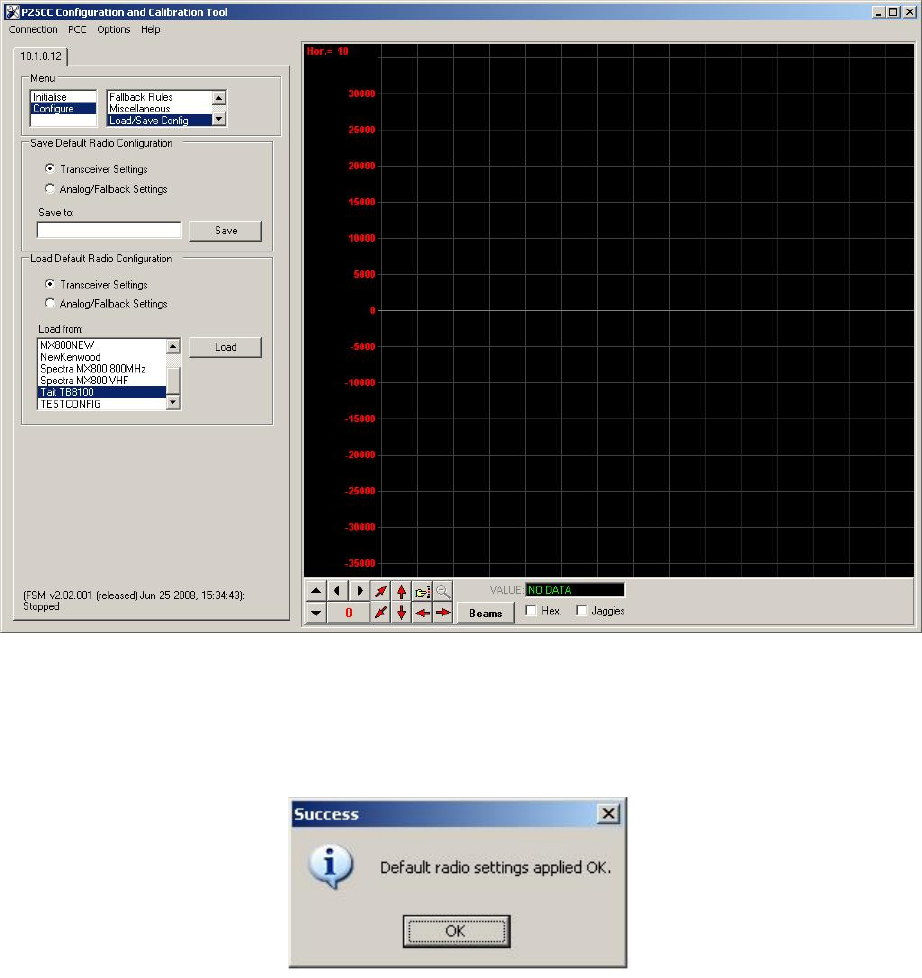
MASTR III Repeater Calibration Procedure 5/16/2011
Raytheon JPS Communications, Inc. 2-16
8/22/2011
Figure 2-15 Load/Save Config Screen
2.4.2 Default Radio Settings Loaded
After loading a notification of the action will be displayed (see Figure 2-16 Default Settings
Applied Screen).
Figure 2-16 Default Settings Applied Screen